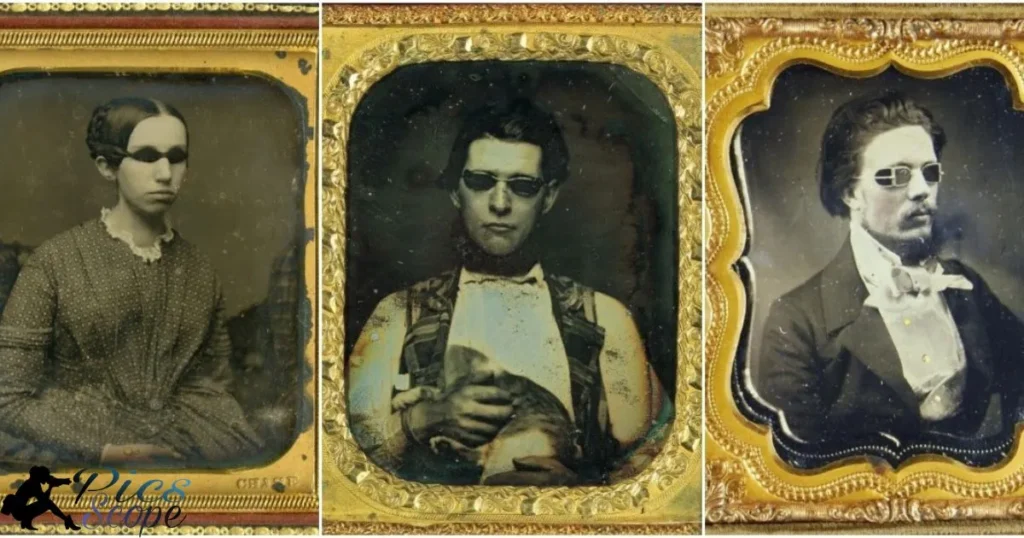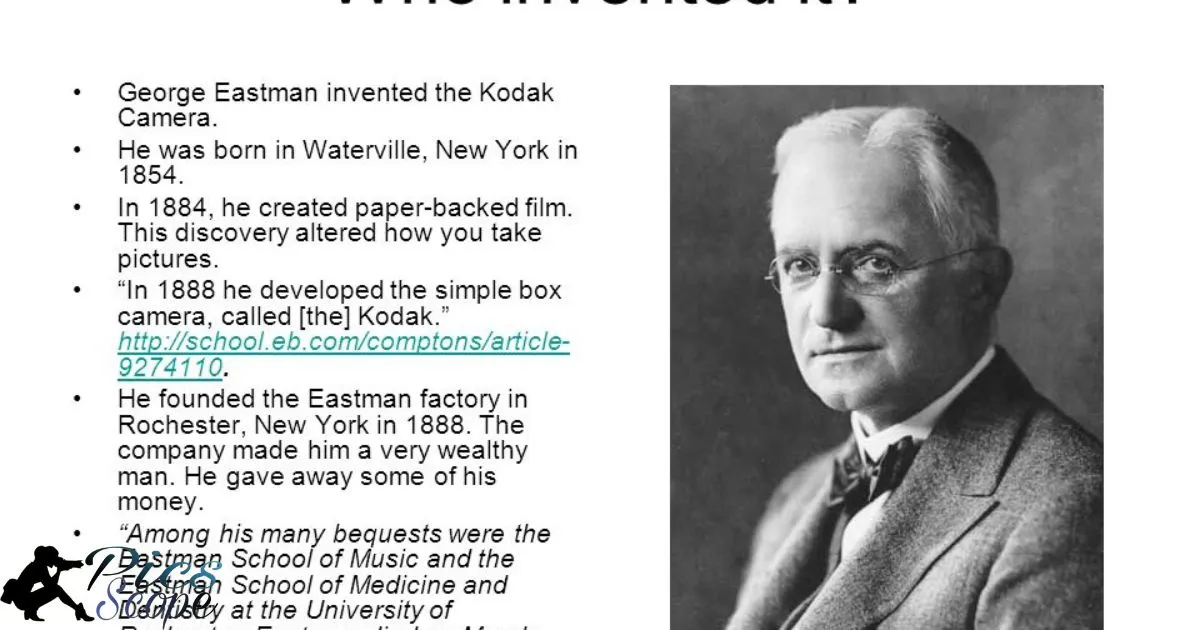The first camera was invented in 1816. It was a wooden box with a basic lens and light sensitive paper. The paper darkened when exposed to light, leaving an image. This allowed pictures to be taken for the first time.
“Who Invented The First Camera?” This is a question many people have pondered. While photography has come a long way since its invention, the beginnings remain shrouded in mystery. Some say one man was the sole creator, while others believe it was invented by different people independently around the same time period.
The first camera is generally credited to either a French inventor named Joseph Nicéphore Niépce or a German inventor named Johann Heinrich Schulze. Both were experimenting with ways to capture images in a dark room using silver salts and emulsions on pewter or glass plates in the early 19th century. However, the details of who truly invented the very first functioning camera remains debated today.
When Was Photography Invented?
Photography was invented in the early 1820s and 1830s. Niépce is often credited as producing the first permanent photograph from nature in 1826. However, others made important early contributions as well.
It took many pioneers to develop the underlying chemistry and techniques needed to invent the long-lasting photographic process. Early photographers tried many approaches before they successfully captured light on surfaces that could permanently hold the images.
Joseph Nicéphore Niépce: The Pioneer Of Photography
Niépce is considered one of the founders of photography for his work in the 1820s. While others experimented earlier, Photography Mean To You he succeeded in creating permanent photogenic drawings. Hisview from the window in 1826 is often cited as the oldest surviving photograph.
Niépce used a pewter plate coated with a light-sensitive solution of bitumen to produce his photograph. Though crude, it showed that light could permanently etch an image onto a plate or paper treated with light-sensitive chemicals.
Johann Heinrich Schulze: The Other Potential Inventor
Schulze independently discovered the photosensitivity of silver salts in 1727. His experiments nearly a century before Niépce showed light interacts with certain materials.
Through his work, Schulze found that salts like silver chloride darken when exposed to light. Though his images were not preserved, he provided an early demonstration of photochemistry that influenced later inventors of photography.
Breakthroughs Led To The Invention Of The Camera
A number of scientific discoveries were needed before photography could be invented, including developments in optics and chemistry. Advances in lens design and production enabled more advanced cameras.
Studying the chemical reactions of certain light-sensitive salts like silver chloride and halides was key. Figuring out how to permanently fix images led Niépce and others to combine these salts with materials like bitumen.
The Earliest Photographs Look
The earliest photographs from the 1820s looked quite crude compared to modern standards. Niépce’s first photograph was very light-sensitive requiring an 8 hour exposure.
Later developments built on these starting points, with Daguerre introducing commercially successful photographs on silvered plates in 1839. But the earliest photos had a fleeting, ghostly quality very different than photos today.
When Was The Camera Invented? Everything You Need To Know
The camera was invented during the early 19th century. It was a revolutionary device that allowed people to capture images on light-sensitive material. The first practical photographic process was developed by Joseph Nicéphore Niépce in 1826, marking the birth of photography.
The camera changed the way we preserve memories and document history. From its humble beginnings with Niépce’s heliography to the modern digital cameras of today, the camera has undergone numerous advancements, shaping the way we see and understand the world around us.
The Debated Origins Of Photography

While Niépce is often called “the father of photography”, some historians believe earlier inventors may have created even more rudimentary photos. As early as the 1600s, experiments suggested the basic principles.
Currently, Niépce is credited with the first truly permanent photograph in 1826 due to his ability to halt the action of light on the photosensitive material. But the debate continues around who can truly lay claim as the inventor of photography.
Experiments Led To The First Permanently Captured Images
In the 1820s, Niépce experimented with using a camera obscura and various materials to capture light’s effects. He found that asphalt could be used to permanently fix an image after a long exposure.
Schulze and others influenced Niépce, showing him that certain light-sensitive chemicals could be used. By 1826, working with bitumen, Niépce succeeded in making the first permanent photograph – a view from his window.
Nicéphore Niépce’s View From The Window
Niépce’s 1826 photograph was of buildings, trees and a courtyard seen out of a windows of his country estate in France. While very faint, it was the first permanent photograph.
His heliographic process combined a pewter plate sensitized with bitumen and an 8 hour exposure in the camera obscura to capture enough light to produce a lasting positive image. This demonstrated photography’s capability.
Schulze’s Photosensitive Glass Plates
Schulze discovered in 1727 that silver salts darkened when exposed to light, one of photography’s crucial foundations. He coated glass with a photosensitive solution containing silver chloride.
When he put drawings behind the glass plates and exposed them to sunlight, faded shadows of the drawings remained after. Though transient, his photosensitive surfaces foreshadowed the chemical reactions at photography’s heart.
Were They Truly The First Or Were There Earlier Inventors
While Niépce is recognized as producing the earliest permanent photograph, there is ongoing debate around earlier potential inventors from the 1600s and 1700s. Some historians argue anonymous pioneers may have come before Niépce.
Figuring out who can truly lay definite claim to inventing photography continues to be studied, as the basic principles were being explored and partially demonstrated by several scientists prior to the 1820s successes. But Niépce succeeded in capturing the first undebated permanent photograph.
Close Were Other Scientists To Inventing The Camera
Experimenters in the 1600s and 1700s like della Porta, Scheele, and Schulze made important contributions by discovering key principles even if they did not create lasting photographs. Their work laid foundations.
Specifically, Scheele and Schulze found that light intensified the darkening of silver salts, a major breakthrough. Some historians believe anonymous unknown geniuses may have developed more than is documented. The path to photography proved long, with many scientists playing roles.
Improving On The Earliest Photography Invention
After Niépce’s first permanent photograph, more refinements were needed. The process required many hours of exposure and produced faded results. Others built on Niépce’s precedent to develop more practical techniques.
Experimenters worked to shorten exposure times, fix images more strongly, and explore new photosensitive materials. This led to notable innovations like Daguerre’s early commercially successful daguerreotype portraits in the late 1830s.
Nicéphore Niépce And Louis Daguerre Collaborate
From the late 1820s, Niépce and Daguerre began collaborating to refine heliography and experiment with new materials. Though Niépce died in 1833, Daguerre continued tests and found iodized silver plates produced clearer images.
Their joint work was an important partnership that advanced photography significantly throughout the 1830s. Both pioneers built upon each other’s findings to take the crucial steps towards making photographic technology viable.
Daguerre’s Contributions To The Development Of The Daguerreotype

Daguerre succeeded in dramatically shortening exposure times and introduced the first practical process – the daguerreotype. Finely polished silver-plated sheets were used.
Iodine fumes helped sensitize the plates and developing mercurial fumes produced sharp, mirror-like images. Daguerre’s technique was introduced publicly in 1839 and became photography’s first commercialized process.
Improvements Needed Before Photography Could Go Mainstream
5 tips on the improvements needed before photography could go mainstream
- Shorten exposure times – Early photographs required very long exposures of minutes or hours. Making the process faster so handheld portraits were possible expanded applications.
- Fix images permanently – Figuring out reliable ways to stop images from fading or changing after development, like Daguerre’s mercury fumes, was crucial for practical usability.
- Simplify chemical processes – Initial photographic techniques involved complex on-location developing solutions. Simplifying chemical requirements made the darkroom accessible to non-experts.
- Allow image duplication – Moving from one-of-a-kind daguerreotypes to processes like Talbot’s calotype that could reproduce prints from a negative vastly increased photography’s utility.
- Miniaturize camera equipment – Early cameras were complex devices the size of furniture. Significant technological progress was required to shrink cameras to portable sizes for candid snapshots and family portraits.
Limited The Capabilities Of Early Photography
Beyond long exposures, some limits of early photography included an inability to reproduce images. Photographs also risked light or chemical damage over time.
Early portraits showed limited shades of color as most photos were monochromatic. Advancing lenses and materials was crucial to expand what could reliably be captured with a camera.
Was The First Viable Photographic Process Introduced
In 1839, Daguerre publicly introduced his daguerreotype process. Exposures could be as brief as several minutes with the precision and detail of a sharply defined mirror image.
Daguerre’s innovation marked the point where photography became successfully commercialized as a practical technology available to the general public. It drove photography’s rapid adoption and spread.
From Daguerreotype To Calotype: Advancing Photographic Techniques
William Henry Fox Talbot was also an important early pioneer. Frustrated with Daguerre’s single images, Talbot invented the calotype process in 1841 to create paper prints from light-sensitive paper negatives.
The calotype allowed for positive prints to be reproduced from a single original glass negative. This hugely increased photography’s applications beyond Daguerre’s portraits.
Was William Henry Fox Talbot’s Role In The History Of Photography
In addition to inventing the calotype process and paper negatives, Talbot published an account of the process in 1841, further spreading knowledge of photography.
Credited as one of the inventors of the negative-positive process, Talbot provided an important alternative to Daguerre’s process with his light-sensitive salted paper. This helped establish photography.
The Creation And Process Of The Calotype Negative-Positive Paper Print
Talbot created salted paper prints by coating paper with a photosensitive solution of silver iodide or bromide. Exposed in the camera, a negative image would form.
When developed, the negative was then contact printed to make a positive image on another treated paper. This enabled reproducing multiple copies from a single negative exposure.
Talbot’s Invention Differ From The Daguerreotype
While Daguerre’s process produced one-of-a-kind mirror images needing fresh plates, Talbot’s calotype could reproduce an unlimited number of prints from glass negatives.
The calotype’s ability to generate and disseminate multiple copies helped drive its spread and commercial success against Daguerre’s more limited single-use portraits.
Other Alternative Photographic Processes Emerged
| Process | Description |
| Ambrotype | Positive photograph on glass; one of the first processes to allow multiple copies from a single negative by reversing the positive/negative image |
| Tintype | Photograph printed on a thin sheet of metal coated with a dark backing, producing a mirror-like portrait |
| Cyanotype | An “blueprint” process using ferric salts to produce cyan-blue prints for reproduction of technical and architectural drawings |
| Albumen print | A photographic printing process using egg whites to bind silver salts to paper for producing contact prints from glass negatives |
| Carte de visite | A small photograph mounted on a uniform card that became popular in the 1850s-1870s, helping standardize portrait photograph sizes |
| Collodion process | Wet plate process introducing glass or metal plates coated with a photochemical emulsion for sharper, clearer images than earlier paper prints |
Was Photography Becoming Increasingly Popular
As the 1840s progressed, Daguerre’s daguerreotype process and Talbot’s calotype spread knowledge of practical photography worldwide. It found commercial, scientific and artistic applications.
Advancing exposures, reproducibility and the expanding community of early photographers all contributed to growing fascination with the new art and technology. Greater affordability fueled adoption.
Resolving Debates Around The Birth Of The Camera

While opinions differ, most historians recognize Niépce for his 1826 photograph, the first permanent photogenic image. But numerous pioneers contributed during photography’s genesis.
Debates around earlier anonymous potential inventors will likely never definitively resolve. But key advances from Scheele, Schulze, Niépce, Daguerre and Talbot undeniably developed an art enjoyed worldwide today.
Deserves Primary Credit As The Inventor Of Photography
While credit is often given to Niépce and Daguerre jointly, photography originated through many anonymous and documented pioneers in the 1600s-1830s.
Talbot also held he deserved credit due to contemporaneous invention of the negative-positive process. Ultimately, photography was the work of numerous experimenters building on each other over centuries towards the viable final technology.
Revisiting The Key Early Experiments And Developments
From the 1600s, scientists like della Porta, Scheele and Schulze laid important groundwork, discovering photosensitive materials and the effects of light.
Niépce succeeded in 1826 with the first enduring photograph. Contributions by collaborators Daguerre and Talbot then finely established commercial photographic techniques through the critical 1830s-1840s.
Assessing The Full Contributions Of Niépce, Schulze, Daguerre And Talbot
Together the work of Niépce, Schulze, Daguerre and Talbot represented crucial phases in understanding light and photochemistry enough to capture the first lasting photographic images.
Debate will always surround crediting photography’s inventor, but these pioneers in particular played defining roles through their recorded experiments, innovations and lasting impact establishing photography’s foundations.
Large-Scale Production Commercialize Photography
Daguerre’s introduction of the daguerreotype in 1839 kicked off photography‘s first widespread commercial adoption through portrait studios. Mass production of plates and equipment grew the industry.
Innovations like the more reproducible calotype further scaled photography. New businesses and graphic arts applications emerged alongside personal uses, driving continuous iterations that made cameras ever simpler.
Lasting Impacts Did Photography’s Invention Have
Photography forever changed visual communication and fields like science, history and art. It enabled documentation, education and greater access to images than handmade art alone provided.
Photography’s impact continues today in media, justice, medicine and more. The curiosity and meticulous experiments of its many inventors yielded an enduring technology that transformed how society views and shares the world.
Frequently Asked Question
Who Invented The First Camera?
Nicéphore Niépce is often credited with creating the first permanent photograph from nature using his “heliographic” process to capture a view of buildings from his estate window in 1826, but the camera had its origins in earlier experiments by many pioneers.
What Was The First Successful Photographic Process?
In 1839, Louis Daguerre introduced the first photographic process capable of producing clear, detailed images – the daguerreotype. Using polished silver-plated sheets and iodine fumes to sensitize the plates, Daguerre’s innovation was also commercially viable.
When Was Photography Made Reproducible?
Frustrated by Daguerre’s one-use plates, William Henry Fox Talbot invented the calotype process in 1841, creating paper negatives that could produce an unlimited number of prints. Talbot’s development of the negative-positive paper printing process helped establish photography worldwide.
What Were Some Other Early Photographic Methods?
Alternative mid-1800s processes included the ambrotype, a positive image on glass; tintype portraits printed on thin metal sheets; early color processes like the azure type; and the collodion wet plate process introducing glass negatives for sharper pictures. These helped diversify photographic applications.
How Did Photography Become More Accessible?
Improvements in exposing and developing photographs allowed capturing images in minutes rather than hours. Innovations in camera design and the introduction of mass production and specialist photography businesses helped drive affordability and availability, making hobbyist snapshots possible for growing numbers of people by the late 1800s.
Conclusion
While the basic principles and experiments toward inventing photography emerged over centuries through the work of many anonymous scientists and inventors, Niépce is generally considered to have produced the first truly permanent photograph with his “view from the window” in 1826.
The innovations of Niépce, Daguerre, Talbot and many others who helped refine light-sensitivity of materials like silver salts and develop fixing techniques built on this foundation to bring photography to the world through practical processes like the daguerreotype in the 1830s-1840s.
While debate continues around allotting a single inventor, photographic technology arose through incremental steps, building scientific understanding of photochemical reactions necessary to realize the capability of “painting with light.” The curiosity and diligence of these many experimenters left a profound and enduring gift that has expanded visual culture globally.







